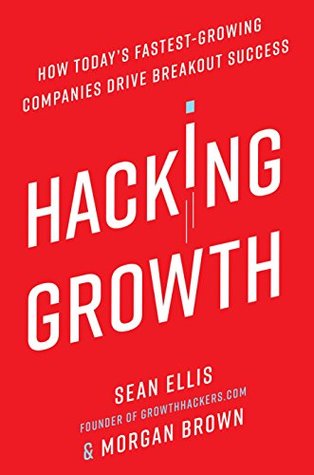More on this book
Community
Kindle Notes & Highlights
by
Sean Ellis
Read between
January 24 - February 13, 2019
traditional silos of marketing, product management, engineering, and data science.
20 to 30 experiments a week,
NUMBER OF INSTALLS × NUMBER OF MONTHLY ACTIVE USERS × NUMBER OF PURCHASERS × AVERAGE ORDER SIZE × REPEAT PURCHASE RATE = AMOUNT OF GROWTH
They determine that their North Star should be monthly revenue per shopper.
formulate a set of questions to guide their analysis,
a large portion of the most active shoppers come to the app from the grocery store’s mobile website.
“The best way to have a good idea is to have lots of ideas.”
Self-censorship is discouraged,
ICE standing for Impact, Confidence, and Ease,
This rating should be based not just on conjecture, but on empirical evidence of some kind, whether from data analysis, review of industry benchmarks, published case studies, or knowledge of previous experiments.
It’s important that the team not get bogged down in trying to fine-tune the score too much. The score is to be used for relative prioritization and will not be perfect. A growth meeting can devolve quickly if team members squabble over a test’s impact score, for example. It’s better for the team to use the score as a valued guide, rather than the be-all and end-all for test prioritization.
Some of the lowest-rated experiments can—and have—turn out to be the biggest winners.
because creating the feature will be fairly complex, the growth lead might task the product manager with consulting the product team about when they can slot the work into their schedule.
we limit each team member to a maximum of three test candidates for the week.
Each experiment run comes at the expense of another candidate.
in case of a “tie,” the “win” should go to the control.5
Some companies also send an email that lists all of the tests run,
additional brainstorming meetings, for example, perhaps once a month.
TEMPO:
HOW MANY TESTS “UP NEXT” WERE NOT LAUNCHED IN THE LAST WEEK:
Sometimes a hack can go from germ of an idea to growth driver with just two weeks or so of work,
One of the great things about growth hacking is that even failed experiments can lead to significant learning over an incredibly short time frame.
Dropbox implemented the referral program,
should always be striving to spark strong word of mouth
For most of us mere mortals, crafting appealing language is extremely difficult. The human response to language is highly emotional, and largely subconscious. Words that resonate for some people may have no particular appeal to some, or even be off-putting to still others.
Another reason the up-tempo growth hacking process is so perfectly suited to this challenge is the fact that language is a breeze to run A/B tests on.
dedication to seeking language/market fit for every story they publish—their
25 different possible headlines for each story.
Amoruso recalls in her book #GIRLBOSS
Marketers commonly make the mistake of believing that diversifying efforts across a wide variety of channels is best for growth. As a result, they spread resources too thin and don’t focus enough on optimizing one or a couple of the channels likely to be most effective.
“It is very likely that one channel is optimal. Most businesses actually get zero distribution channels to work. Poor distribution—not product—is the number one cause of failure. If you can get even a single distribution channel to work, you have great business. If you try for several but don’t nail one, you’re finished.”
building a community, which is a viral channel, is also a good lever for driving growth;
The team comes up with the following hacks to consider:
In addition to standing out, one of the beauties of tools is that they can be “evergreen,” requiring little continual upkeep to remain an effective new customer magnet, sometimes for many years.
Virality is a balance of how good the packaging is and how good the content is.”
he’d told the growth team not to even think about instrumenting virality at first and to focus instead on building a great product.
you’ve got to make the experience of sharing the product with others must-have—or at least as user friendly and delightful as possible.
The best way to do this is to create a double-sided incentive,
and quite cleverly built in a social-driven loop by encouraging ticket buyers to share with their friends that they’re going to an event.
LinkedIn prompts you as soon as you join to see who you are connected with and to import your email contacts to build your network. Uber prominently promotes an incentive to invite your friends right on the screen that details the status of the ride you’re currently taking.
MAKE SURE THE INVITEES ARE GIVEN A GOOD EXPERIENCE
perhaps instead the key was to get people to the aha moment faster.
The key takeaway here is that you cannot know ahead of time which experiments are going to be most effective. The best you can do is stay nimble and data-driven: continuously tailoring experiments according to the discoveries you make and then being ready to quickly adjust and try other approaches if experiments aren’t working as hypothesized.


